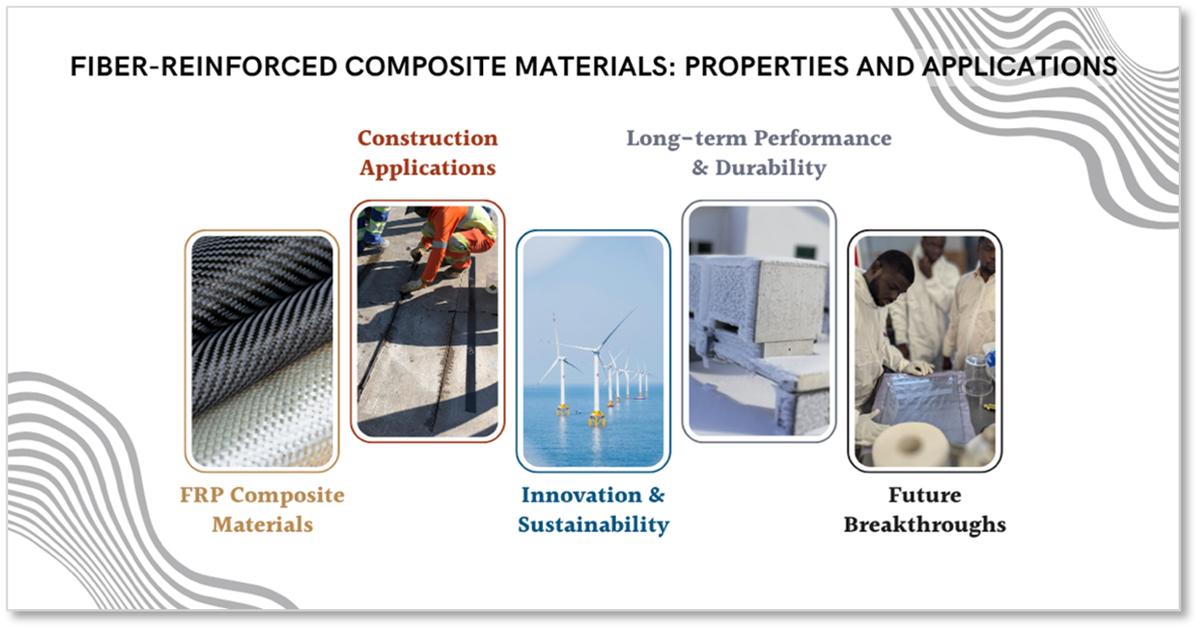- 3.2Impact Factor
- 6.4CiteScore
- 16 daysTime to First Decision
Fibre-Reinforced Composite Materials: Properties and Applications
This special issue belongs to the section “Advanced Composites“.
Special Issue Information
Dear Colleagues,
The use of fibre-reinforced polymer (FRP) composites in construction has advanced significantly, thanks to ongoing innovations in material systems and engineering applications. While most FRP composites use carbon or glass fibres and are still based on thermoset resins, new developments in FRP systems continue to improve their performance, durability, and sustainability. These materials offer proven advantages, such as enhanced corrosion resistance, longer lifespan, and reduced maintenance costs, particularly in harsh environments. FRP composites are increasingly used in prestressed concrete applications, enabling more efficient and durable designs. Additionally, the growing focus on recyclability and sustainability is driving new research on eco-friendly FRP systems, aligning with the principles of the circular economy. This Special Issue highlights the latest advancements in fibre-reinforced composite materials, emphasizing innovation and their proven benefits for the construction industry. It aims to show the ongoing efforts in optimizing the use of composites in structural applications for both new and existing structures, exploring their properties, long-term performance, and potential for future breakthroughs.
Dr. José Manuel De Sena Cruz
Dr. Luís Correia
Guest Editors
Manuscript Submission Information
Manuscripts should be submitted online at www.mdpi.com by registering and logging in to this website. Once you are registered, click here to go to the submission form. Manuscripts can be submitted until the deadline. All submissions that pass pre-check are peer-reviewed. Accepted papers will be published continuously in the journal (as soon as accepted) and will be listed together on the special issue website. Research articles, review articles as well as short communications are invited. For planned papers, a title and short abstract (about 250 words) can be sent to the Editorial Office for assessment.
Submitted manuscripts should not have been published previously, nor be under consideration for publication elsewhere (except conference proceedings papers). All manuscripts are thoroughly refereed through a single-blind peer-review process. A guide for authors and other relevant information for submission of manuscripts is available on the Instructions for Authors page. Materials is an international peer-reviewed open access semimonthly journal published by MDPI.
Please visit the Instructions for Authors page before submitting a manuscript. The Article Processing Charge (APC) for publication in this open access journal is 2600 CHF (Swiss Francs). Submitted papers should be well formatted and use good English. Authors may use MDPI's English editing service prior to publication or during author revisions.
Keywords
- FRP materials and systems
- structural applications of FRPs
- innovative FRP solutions
- advanced contributions to FRP knowledge
- FRP material testing
- durability and performance of FRPs
- finite element analysis of FRPs
- sustainable FRP materials
- recyclability of FRP composites
- case studies
- standardization

Benefits of Publishing in a Special Issue
- Ease of navigation: Grouping papers by topic helps scholars navigate broad scope journals more efficiently.
- Greater discoverability: Special Issues support the reach and impact of scientific research. Articles in Special Issues are more discoverable and cited more frequently.
- Expansion of research network: Special Issues facilitate connections among authors, fostering scientific collaborations.
- External promotion: Articles in Special Issues are often promoted through the journal's social media, increasing their visibility.
- e-Book format: Special Issues with more than 10 articles can be published as dedicated e-books, ensuring wide and rapid dissemination.

